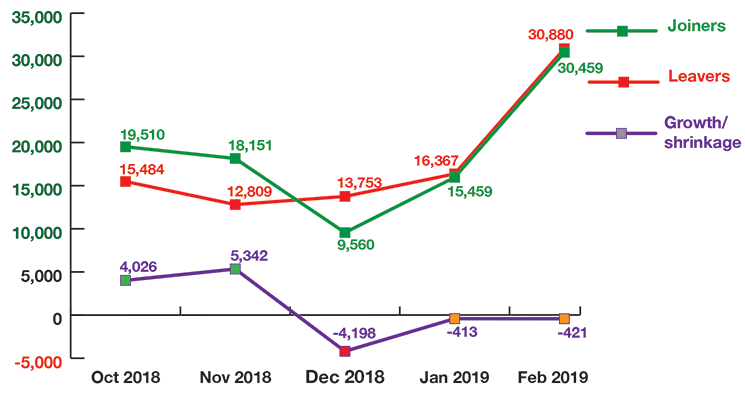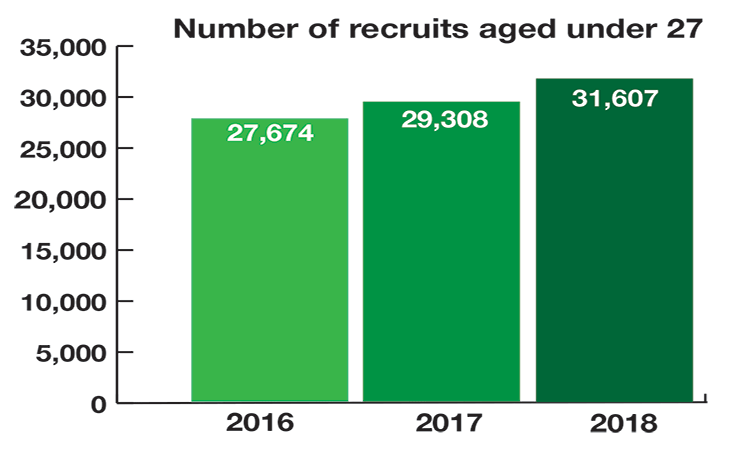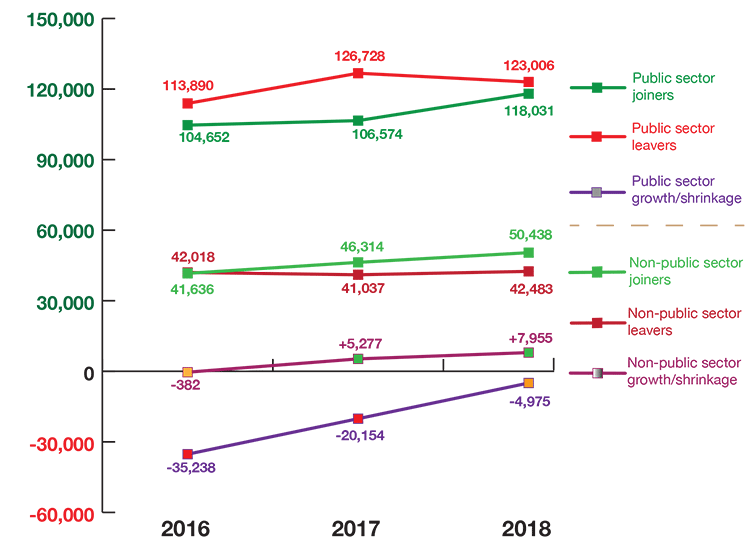We’re going for growth in May, following on from the success of the Grovember. That month of activity by the whole union made us not only the biggest union in the UK – but a growing one.
We’re not resting on our laurels, however.
If November showed that by acting together we can push our recruitment into growth, May is about applying what we learned and starting to develop a sustainable union-wide recruitment and retention plan strategy.
UNISON is aiming to run two or three month-long campaigns each year where branches, regions and the centre focus on recruitment and retention and make sure our union continues to grow and grow stronger.
So what did last winter’s Grovember campaign achieve, that we’re so keen on building on it?
Well, 2018 was the first year we ended December with more members than we had on 1 January. Recruitment in November 2018 was 4,494 – or 10% – higher than in November 2017. But more importantly, the number of people leaving the union fell by 29% – our recruitment wasn’t just about pouring new water in a bucket that was leaking heavily.
So let’s look at the figures for the past three years.

The work by individual stewards and reps, branches, regions and UNISON Centre – including national recruitment advertising – has seen our recruitment steadily improve. We signed up a little more than 146,000 new members in 2016, climbing to 168,000-plus in 2018.
Yet still we saw the union shrink by more than 35,000 members in 2016 and almost 15,000 in 2017. But last year was different. For the first time, the number of leavers – 165,489 – was less than the number of recruits – 168,469. And that meant we recorded a growth in the total number of members.
Admittedly, 2,980 might not seem like a huge growth at first sight – but compared to the size of the losses recorded in previous years, it is a very big corner turned.
How did we do it? The last five monthly figures give us a clue

The effect of Grovember clearly cast a shadow before it as the union geared up for the month itself: we recruited more than 19,000 new members in October – and lost 15,000 existing members – to record net growth of 4,026.
In November itself, recruitment dipped slightly to 18,000 – but we retained a lot more members: the leavers number plummeted to just under 13,000, so we grew by well over 5,000 in that month.
This just highlights that retention – keeping the members we’ve already got – is at least as important as recruitment. That’s why we concentrated on both in Grovember, and it’s why we want to make sure that retaining members is also a key focus as we Go for Growth in May.
Another thing that stands out from the graph is that we saw a net loss again in December, which is common: people are less likely to make the decision to join a union while they’re concentrating on Christmas and its costs.
But beyond December, although the figures show net losses in January and February, these are miniscule – just in the hundreds.
There’s a very clear improvement on previous years and definitely something to build on and encourage as we Go for Growth in May.
As assistant general secretary Liz Snape told the NEC when she reported on the plans: “We experienced historic growth in November – and the figures since then are unprecedented.
“Three of our regions are now bigger than they’ve previously been; two regions that were struggling with job losses are now in growth, and other regions are now stabilised.”
But where are things happening – where did we show particular strengths? Two final graphs to whet your appetites:

We’ve been steadily recruiting more and more young workers for some years now, which makes them a key target as we grow our union, now and for the future. And that’s especially true in UNISON’s Year of Young Workers.

Recruits who work for private companies or community and voluntary organisations have been an important and growing part of our union for a number of years. And they account for much of the growth we’ve experienced.
But the fact that our membership in the public sector still showed a loss of almost 5,000 in 2018 shouldn’t dishearten us.
That loss is very small compared to previous years (35,328 in 2016 for instance). It’s certainly a figure we should be able to turn around by some planned campaigning this year, with a mixture of recruitment and working to keep members in the public sector. Starting this spring.
It’s all to play for and all to win. So let’s Go for Growth.


